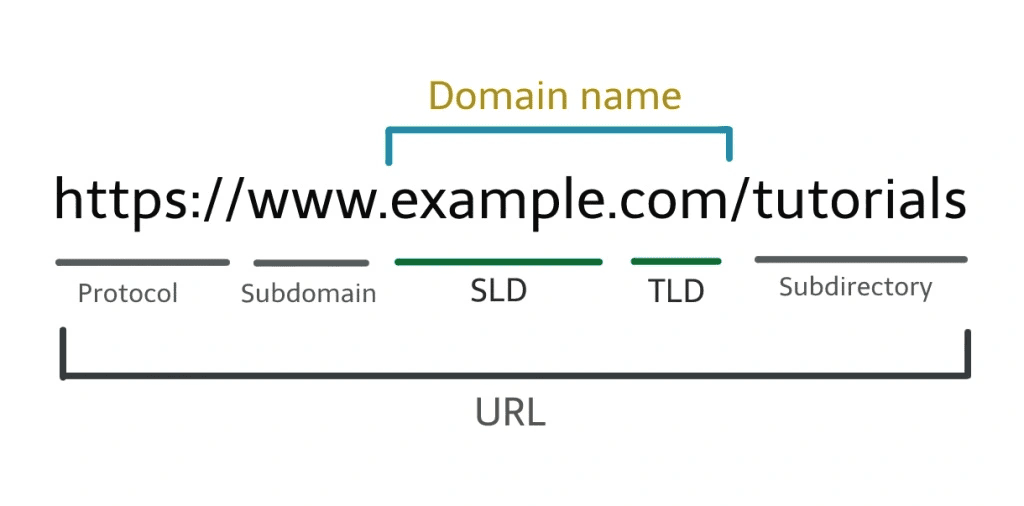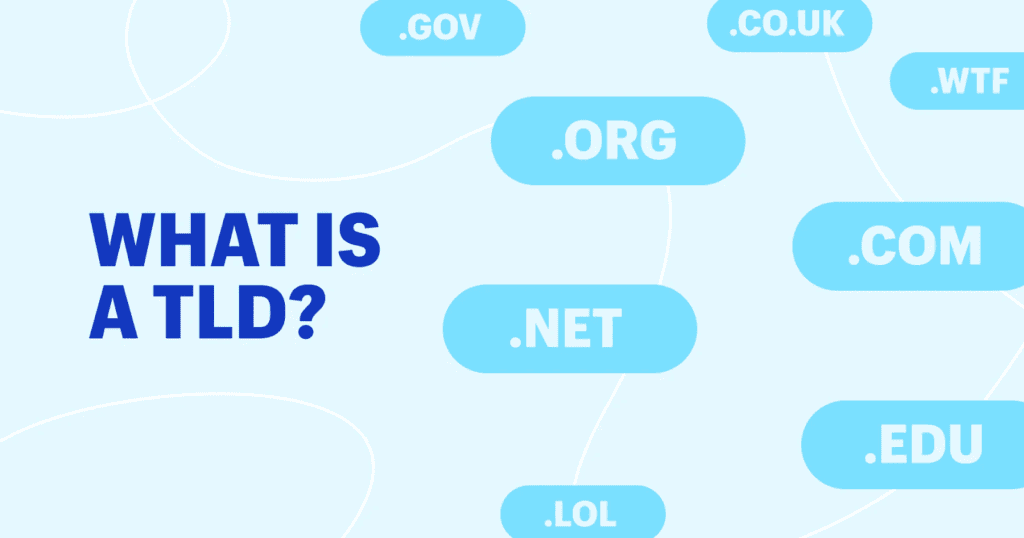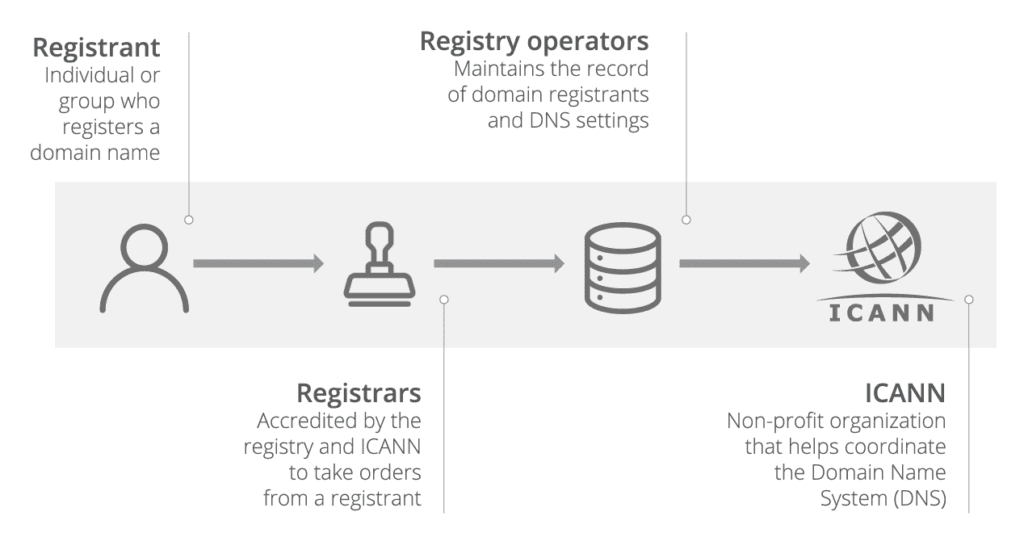In the vast digital landscape, domain names serve as the street addresses of the online world, guiding users through a myriad of information. With millions of websites populating the internet, how can you make your digital address stand out? A well-chosen domain name can make all the difference in attracting visitors and establishing a strong brand identity. This blog post will explore the various types of domain names, their importance, and how to find the perfect one for your business or personal website.
From understanding the role of the Domain Name System (DNS) to tips on selecting the perfect domain name, we’ll guide you through the ins and outs of the domain landscape. By the end of this blog post, you’ll have a solid grasp on the different types of domain names and how to choose the right one for your needs.
Contents
ToggleKey Takeaways
- Domain names provide a user-friendly way of navigating to websites, with the Domain Name System (DNS) translating domain names into IP addresses.
- Choosing the right domain name is essential for building an online presence and improving search engine rankings.
- Researching potential legal issues and selecting a reliable registrar are important considerations when registering your desired domain name.
Understanding Domain Names

Domain names serve as the World Wide Web’s linchpin, acting as memorable and searchable web addresses for websites. Behind the scenes, the Domain Name System (DNS) translates these user-friendly domain names into IP addresses, which are numerical identifiers that allow browsers to locate web servers hosting the websites. Domain names’ significance is undeniable as they facilitate easy navigation and access to the extensive information available online.
Learn: How To Transfer A Domain?
A domain name typically consists of two or three words. These words are separated by dots, such as “www.example.com”. The rightmost part of the domain name, in this case, “.com,” is called the top-level domain (TLD), which serves to distinguish the type of website or organization. The leftmost part, “www.example,” is known as the second-level domain (SLD) and represents the website or organization itself. Together, these components create a unique web address that represents your brand or business online.
The Role of Domain Name System (DNS)
The Domain Name System (DNS) holds significant importance in the internet infrastructure by enabling the translation of domain names into IP addresses. This process allows browsers to access websites by communicating with name servers to locate the associated IP address. In essence, the DNS functions as the internet’s directory, linking memorable domain names to the numerical IP addresses required for browsers to locate and display websites.
Learn how to Fix DNS_PROBE_FINISHED_NXDOMAIN Error.
Absent the DNS, users would be burdened with the impractical task of memorizing long strings of numbers (IP addresses) to access websites. The DNS simplifies this process by allowing users to input a memorable domain name into their browser, which is then translated into the corresponding IP address, making the internet more accessible and user-friendly.
Importance of Choosing the Right Domain Name
The choice of an appropriate domain name is fundamental to your online success, impacting your website’s credibility, memorability, and search engine rankings. Having your own domain name that is consistent with your company name can help create a cohesive online brand presence and make it easier for potential customers to find and remember your website.
Learn: How To Improve Your Website’s Domain Authority?
Consideration of factors like length, simplicity, and relevance to your target audience is vital while selecting a domain name. A concise, easily remembered domain name can set your website apart from those with more complicated or confusing names, making it more likely that users will visit your site and return in the future.
Top-Level Domains (TLDs)

Top-Level Domains (TLDs) are the highest level in the Domain Name System hierarchy and play a significant role in organizing the World Wide Web. There are various types of TLDs, each serving a specific purpose or catering to a particular audience. Understanding these classifications can help you choose the ideal domain for your website, ensuring a strong online presence and increased visibility.
This section will explore different TLD types, including generic top-level domains (gTLDs), country code top-level domains (ccTLDs), and internationalized domain names (IDNs), equipping you with the knowledge to make an informed domain name selection.
Generic Top-Level Domains (gTLDs)
Generic Top-Level Domains (gTLDs) are domain names that do not pertain to a particular geographic region, but rather a specific subject matter. They are popular due to their specificity, memorability, and the creative possibilities they offer when designing a website.
Some common examples of gTLDs include:
- .com (commercial)
- .net (network)
- .org (organization)
- .info (information)
- .biz (business)
- .gov (government)
Know More: Com Vs. Net – Difference Between Domain Extension
These multiple domain names cater to various purposes and industries, making them a versatile choice for most websites, including those using the same domain name on Google Domains.
Country Code Top-Level Domains (ccTLDs)
Country Code Top-Level Domains (ccTLDs) are internet top-level domains typically used or allocated for a particular country, sovereign state, or dependent territory. These two-letter domain extensions signify the relationship of a domain name to a specific country, region, or language. For example, .us represents the United States of America, .ca represents Canada, and .uk represents the United Kingdom of Great Britain and Northern Ireland.
Utilizing ccTLDs can help target a specific audience based on their location and enhance your website’s visibility within a particular country or region.
Internationalized Domain Names (IDNs)
Internationalized Domain Names (IDNs) allow individuals worldwide to use domain names in their native languages and scripts, making the internet more accessible and inclusive. IDNs are formed using characters that are not typically accepted in domain names, such as accented letters or characters from non-Latin alphabets.
This innovation enables a more diverse range of users to access and create websites in their preferred languages, breaking down linguistic barriers and fostering global connectivity.
Second-Level Domains (SLDs)
Second-Level Domains (SLDs), subservient to top-level domains in the DNS hierarchy, play a key role in forming a website’s identity. They typically represent the name of the business or organization registering the domain name and are used to distinguish different websites with the same top-level domain.
The following subsections will delve into country code second-level domains (ccSLDs) and business and brand-specific SLDs, elucidating how these domain classifications contribute to a robust and memorable online presence.
Country Code Second-Level Domains (ccSLDs)
Country Code Second-Level Domains (ccSLDs) are the second-level domains located to the right of the period in a domain name that includes a country code top-level domain. These domains are assigned by domain name registries for specific countries and are used to identify websites associated with a particular country or region.
By using a ccSLD, you can:
- Demonstrate your website’s connection to a specific country or region
- Potentially attract a more targeted audience
- Enhance your online presence within that area.
Business and Brand-Specific SLDs
Business and brand-specific Second-Level Domains (SLDs) are domain names that are specifically tailored to a business or brand, reflecting their name or identity. Examples of such SLDs include “www.apple.com” and “www.cocacola.com”. These SLDs are often paired with a suitable domain extension to further enhance their online presence.
Know More: WordPress For Small Business: Why Is It The Best Choice?
By choosing a unique and relevant SLD that represents your business or brand, you can create a stronger online presence, improve brand recognition, and make it easier for potential customers to find and remember your website.
Third-Level Domains (Subdomains)
Third-Level Domains, also known as subdomains, are distinct divisions or subsections of a primary domain. They are created by appending a prefix to the primary domain name, separated by a dot. Subdomains are useful for organizing and categorizing different sections or functions of a website, allowing users to easily locate the information they need.
Learn: 10 Best WordPress Website Management Tools For 2023 (Compared)
The forthcoming subsections will highlight practical applications of subdomains, including creating personalized email addresses and organizing various website sections, aiding you in maximizing this versatile domain feature.
Creating Subdomains for Different Website Sections
Creating subdomains for different website sections can greatly improve your website’s organization and user experience. By assigning specific subdomains to different sections, such as “blog.example.com” for a blog or “shop.example.com” for an online store, users can easily navigate to the desired part of your website without having to sift through unrelated content.
This efficient organization can lead to increased user engagement and satisfaction, ultimately boosting your website’s overall performance and success.
Personalized Email Addresses with Subdomains
Using subdomains for personalized email addresses can enhance your brand identity and professionalism, making your business stand out in a crowded digital landscape. For example, instead of using a generic email address like “example@gmail.com,” you can create a custom email address using your domain name, such as “john@example.com”. This not only elevates your brand image but also provides you with a custom web address that is unique to your business.
This not only looks more professional but also reinforces your brand identity and makes it easier for customers to remember and recognize your business.
Registering Your Domain Name

Now that you have a better understanding of the different types of domain names and their applications, it’s time to register your desired domain name. Domain name registration entails its purchase through a domain name registrar like GoDaddy, and providing personal details such as your name, address, and contact information.
In the following subsections, we’ll discuss the role of domain name registrars, tips for choosing a trustworthy registrar, and the process of registering your perfect domain name.
Domain Name Registrars
Domain name registrars are companies that provide the service of registering domain names with the Internet Corporation for Assigned Names and Numbers (ICANN). ICANN is responsible for assigning and categorizing various types of domain names, ensuring the registration process is conducted efficiently and transparently.
Choosing a domain name registrar requires selection of a reputable company known for its reliability and exceptional customer support.
Tips for Choosing a Trustworthy Registrar
Choosing a reliable domain registrar involves evaluation of factors including:
- Reputation
- Customer service and support
- Pricing
- Security measures
Researching the registrar and reading reviews from other customers can help you make an informed decision and ensure a smooth registration experience.
Additionally, consider the registrar’s customer service availability (e.g., 24/7 support) and the variety of support options (e.g., phone, email, live chat) to ensure you can receive assistance when needed.
Tips for Selecting the Perfect Domain Name
Selecting the perfect domain name for your website or online business is crucial for your success in the digital world. A well-chosen domain name can make all the difference in attracting visitors, establishing a strong brand identity, and improving your search engine rankings.
This section will offer tips for selecting your dream domain name, encompassing aspects like simplicity, target audience consideration, and potential legal issues research.
By following these tips and guidelines, you’ll be well on your way to securing the perfect domain name for your website, ensuring a strong online presence and a successful digital future.
Keep It Short and Simple
Opting for a domain name demands it to be brief, straightforward, and memorable. A concise domain name is more likely to stick in users’ minds, making it easier for them to find and revisit your website. Avoid using overly complex or lengthy domain names, as these can be difficult to remember and may deter potential visitors.
By keeping your domain name short and simple, you’ll increase the chances of users finding and engaging with your website.
Consider Your Target Audience
Keeping your target audience in mind while choosing a domain name is key to establishing a robust online presence and drawing suitable visitors to your website. Think about the demographics, interests, and needs of your ideal customer, and choose a domain name that will resonate with them.
This can help you stand out among competitors and ensure that your website is memorable and relevant to your target audience.
Research Potential Legal Issues
Choosing a domain name mandates research into potential legal issues like trademark infringements to prevent disputes and safeguard your brand. To prevent potential legal disputes, ensure that your chosen domain name does not violate any existing trademarks or copyrights.
Additionally, consider registering your domain name as a trademark to protect it from potential infringement and safeguard your brand’s reputation.
Summary
In conclusion, domain names are an essential aspect of your online presence and play a crucial role in determining your website’s success. Understanding the different types of domain names, their classifications, and their applications can help you choose the perfect domain name for your website or online business. By following the tips and guidelines provided in this blog post, you’ll be well-equipped to register your domain name, select a trustworthy registrar, and establish a strong online presence.
Remember that the perfect domain name is an investment in your digital future. By choosing a memorable and relevant domain name, you can attract the right audience, establish a strong brand identity, and ultimately, achieve success in the digital landscape.
Frequently Asked Questions
What are the 7 types of domain?
The 7 types of domain are .com (commercial business), Organization (non-profit), gov (government agencies), edu (educational institutions), Net (network organizations), Mil (military) and ccTLDs (country code top-level domains).
What are Internet domain types?
Internet domain types are divided into two main categories – generic top-level domains (gTLDs) and country code top-level domains (ccTLDs), such as .com, .net, .edu, .org, .mil and .gov.
What are the 3 parts of a domain name?
A domain name is comprised of three main parts: a subdomain, a domain name and a top-level domain. Subdomains start with “www”, the domain name is the website’s name and the top-level domain is an extension like “.com” or “.gov”. All of these components are separated by periods, forming a fully qualified domain name (FQDN). Having a good domain name is important for businesses and organizations. It helps customers find your website and can be used to create a memorable brand. It’s also important to choose a domain name that is easy to remember
How do I give my website a domain name?
To give your website a domain name, you will need to register it through a domain registrar, such as GoDaddy, Bluehost or Domain.com. Once registered, you can edit your domain name settings and enter the Name Server information provided by your hosting company. Additionally, you should make sure to verify ownership and find the owner’s contact information once your domain is purchased and registered.
What is the difference between a domain name and an IP address?
A domain name is a user-friendly alternative to an IP address, while an IP address is a unique numerical identifier used to locate and access websites on the internet.

















